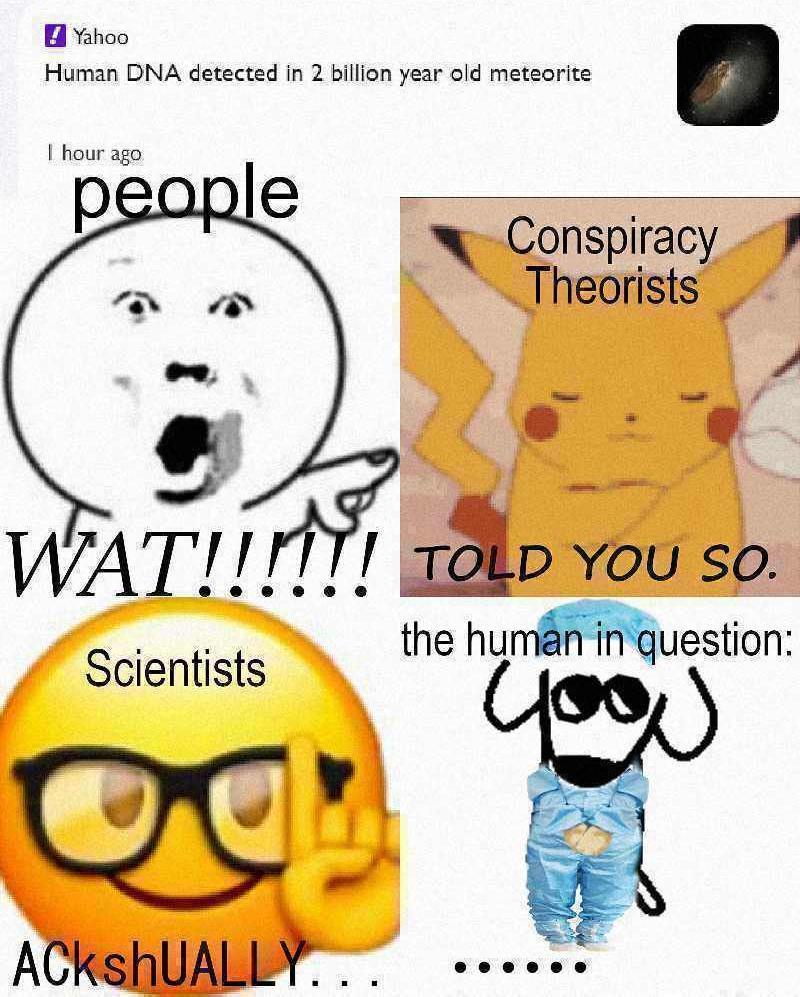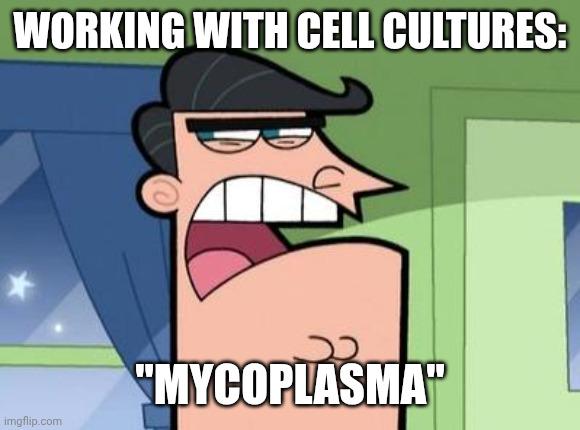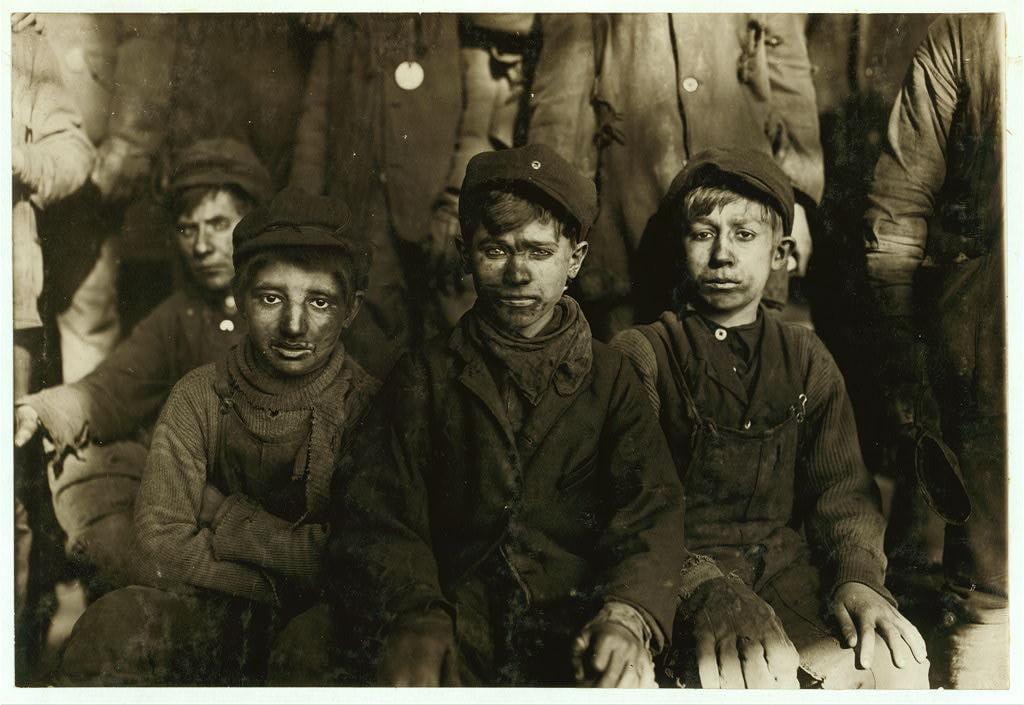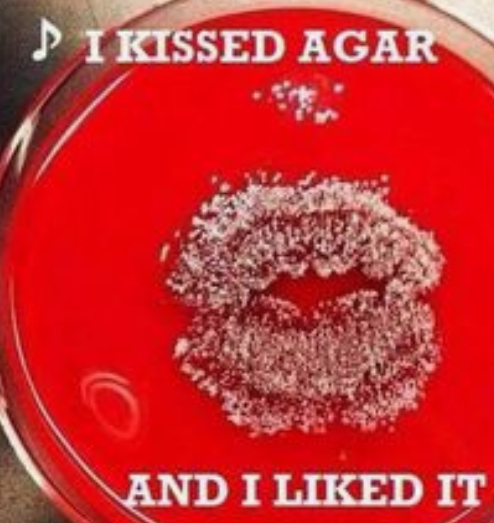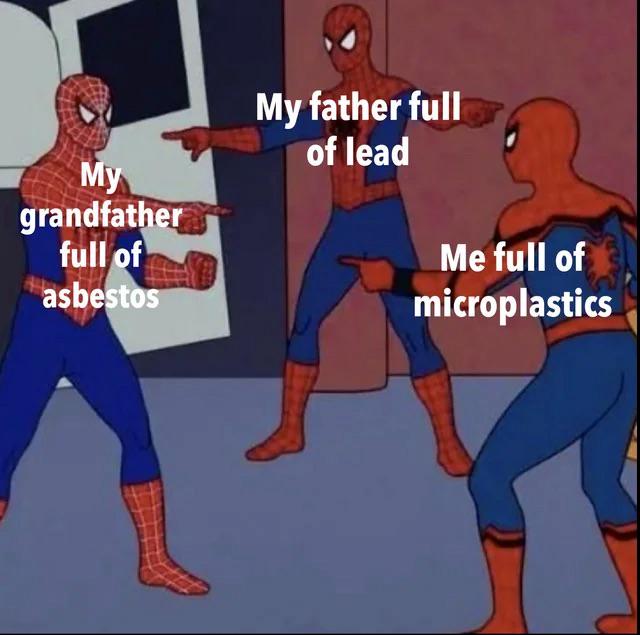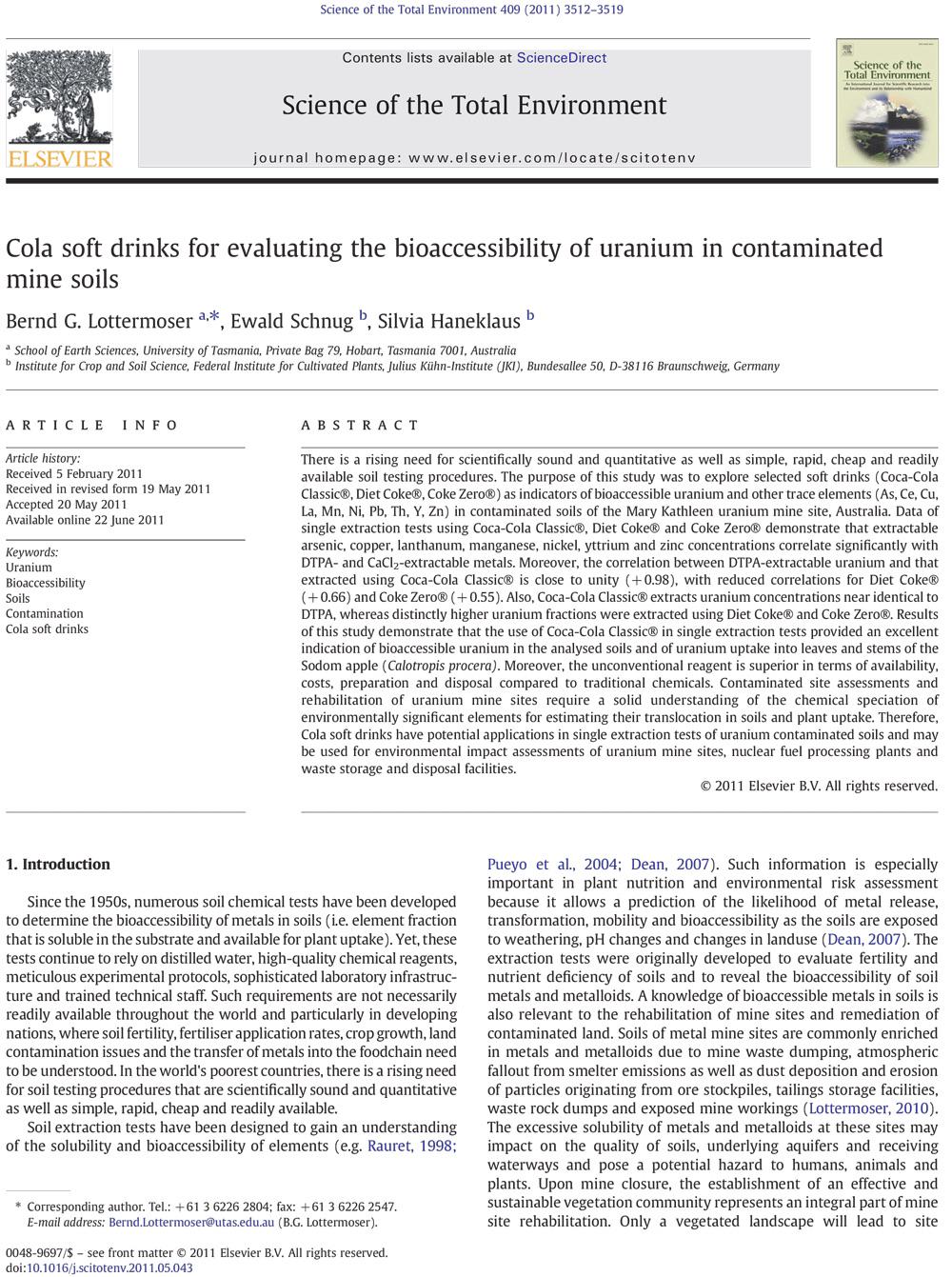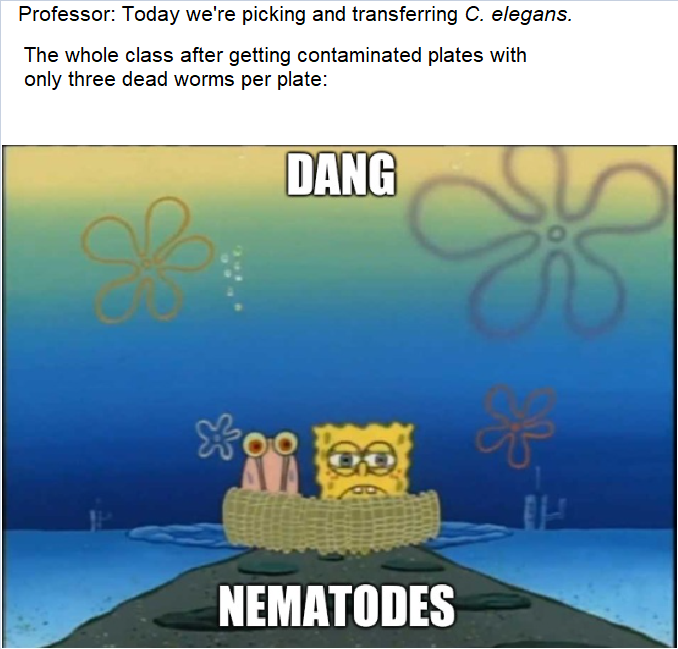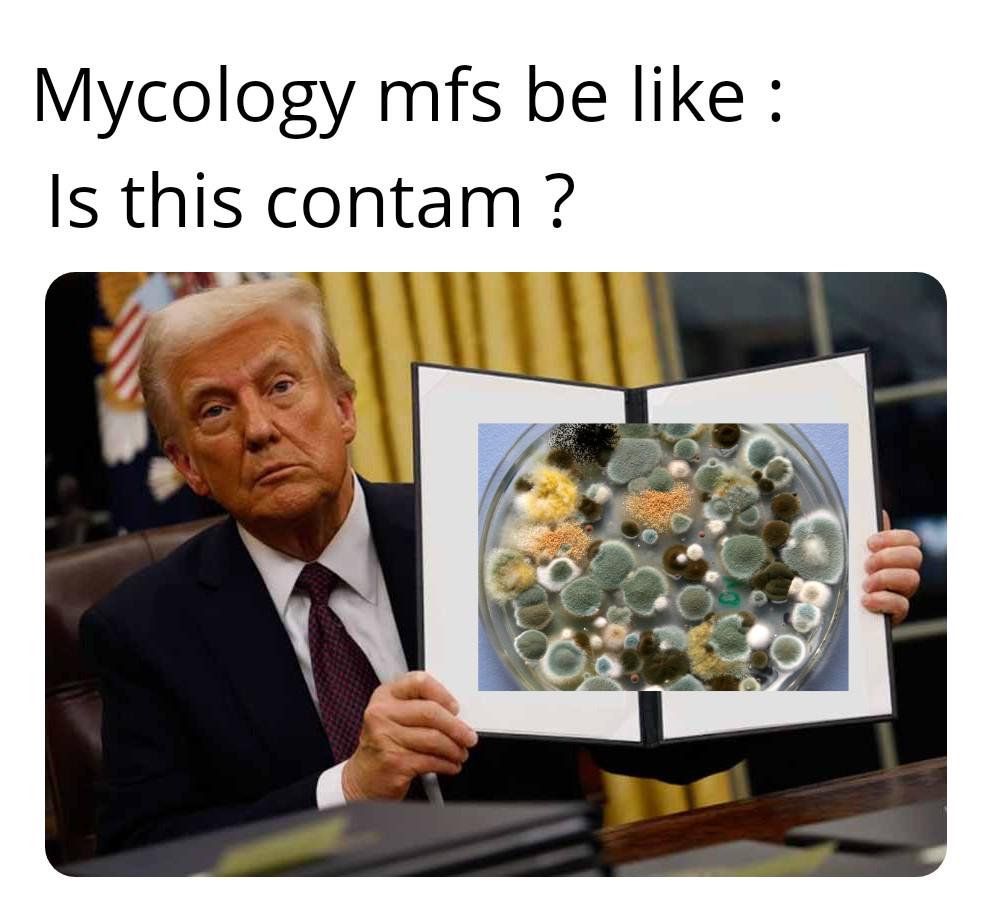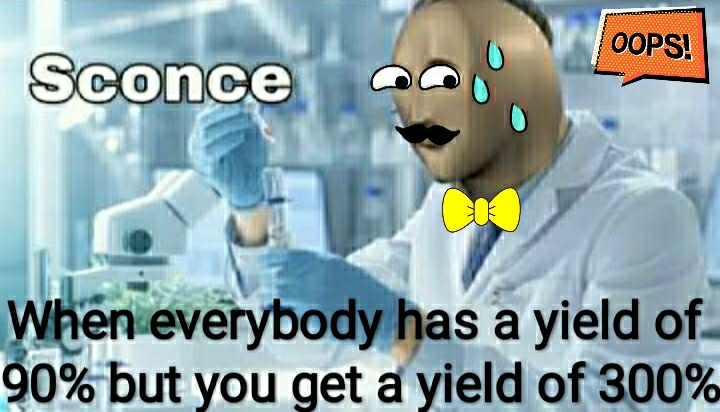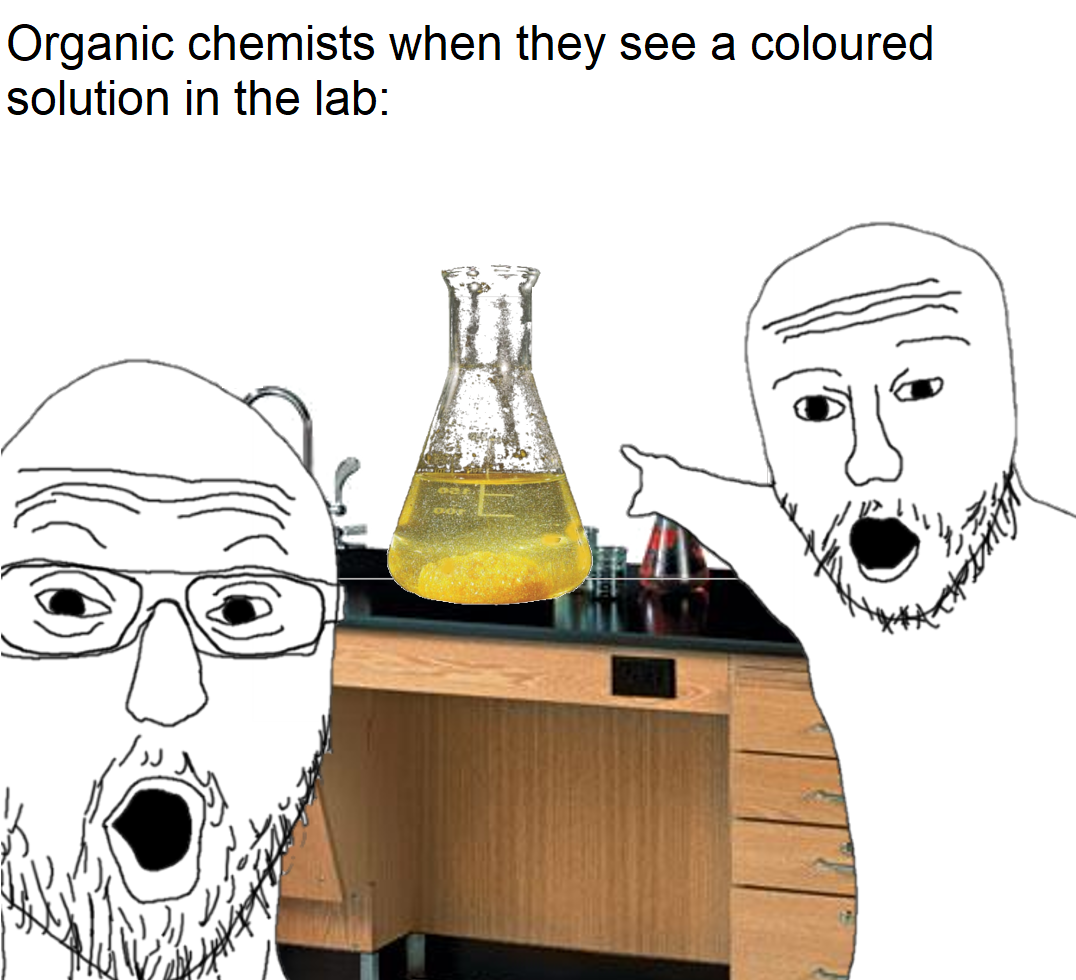The ultimate scientific showdown! A headline claims human DNA was found in a 2-billion-year-old meteorite, and everyone's losing their minds. Regular folks are shocked ("WAIT!!!"), conspiracy theorists are smugly vindicated ("TOLD YOU SO"), scientists are rolling their eyes ("ACKSHUALLY..."), and the alleged time-traveling human culprit is just awkwardly standing there like "whoops, my bad." 🚀 Fun fact: Earth's oldest rocks are only about 4 billion years old, and humans have existed for roughly 300,000 years. So finding human DNA in something twice as old as Earth's oldest rocks would indeed break science as we know it! Either that or someone needs to learn proper lab contamination protocols... 👨🔬


 Academia
Academia
 Ai
Ai
 Astronomy
Astronomy
 Biology
Biology
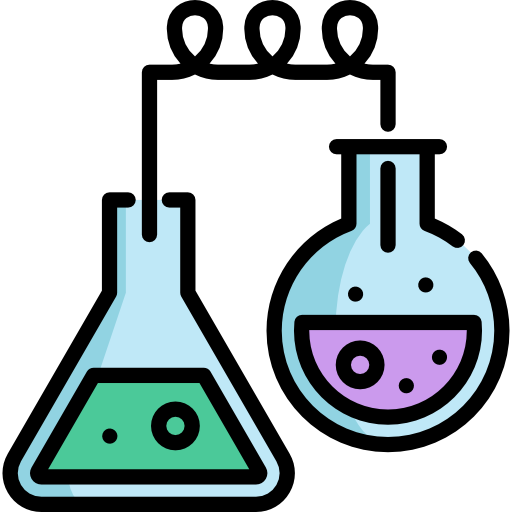 Chemistry
Chemistry
 Climate
Climate
 Conspiracy
Conspiracy
 Earth-science
Earth-science
 Engineering
Engineering
 Evolution
Evolution
 Geology
Geology
